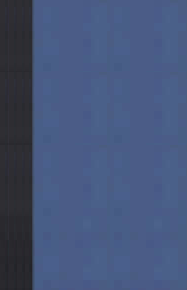Before searching for images, review any concept maps or play analysis lists you may have created while reading the play.
Make a list of 20 words that you could use as search terms. You can include active verbs and descriptive adjectives -- descriptive terms may work better as keywords in online search engines than in library databases, but you can adapt your searches to the search tool you are using.
Your search terms might include:
Make a shorter list of 2-3 places you will begin your search. These might be a database like ARTSTOR, or an online source like Google Arts & Culture. Maybe you want to start with a PRIMO search, to find a physical book? Strategize what your first few moves will be -- you can always expand your search later.
Get searching! Play around with a database or two. Take notes on which keywords work well, and which don't. Rinse and repeat.
Don't forget to record citation information for the images you find. Refworks or Zotero are great tools for capturing and managing your citations.
adapted from "Visual Research Exercise 1" in Porter, Lynne. Unmasking Theatre Design: a Designer's Guide to Finding Inspiration and Cultivating Creativity, Taylor & Francis Group, 2014. ProQuest Ebook Central, https://ebookcentral.proquest.com/lib/ups/reader.action?docID=1818208&ppg=150.
To find books that are composed primarily of images, add the term "pictorial" to your search in Primo. For example, movie theaters pictorial, or 1940s pictorial.
You can also search by period or style. For example, mid-century modern will find books that cover the time period and design style you are investigating. You may also want to use words that denote the inside of a house, like room or interior, for example.
Books on "daily life" often contain a variety of images. For example, "daily life" + United States.
Google Image search utilizes advanced algorithms to analyze and index billions of images across the web.
Textual Analysis: Google analyzes the surrounding text on a webpage to understand the context and relevance of an image, including captions, alt text, and page content.
Visual Analysis: Through sophisticated computer vision techniques, Google's systems analyze the visual features of images, including colors, shapes, and objects, to identify similarities and patterns, and then ranks and displays those images.
This is why it is important to think about robust vocabulary which describes the concept or object you want to find an image of.
Instead of searching on the keyward sunset, which returns thousands of results, specify the location, or elements of the landscape, the mood, or a specific color palette.
Narrower: “beach sunset” + “pacific northwest”
Even more specific location and color search : sunset “shi shi beach” pink
Once you have a collection of images that you think are promising, you can use the options under “Tools” to narrow to the most useful images for your purpose. You can narrow by image size, type (ie. line art vs. photograph), file type (.jpeg, .gif, etc.) and by usage rights (ie. creative commons images)
Content in this box adapted in part from Carter, Sarah, and Willa Tavernier. “Images for Creative Projects: Searching Successfully, Assessing Quality, Understanding Fair Use – Visual Literacy Today.” Accessed July 16, 202; and https://aicontentfy.com/en/blog/unlocking-power-of-google-images-tips-and-tricks-you-need-to-know
 The Visual Dictionary of American Domestic Architecture
by
Rachel Carley; Ray Skibinski (Illustrator); Ed Lam (Illustrator)
The Visual Dictionary of American Domestic Architecture
by
Rachel Carley; Ray Skibinski (Illustrator); Ed Lam (Illustrator)
A digital library of images in the areas of art, architecture, the humanities, and social sciences, with a set of tools to view, present, and manage images.
Artstor is now available in its new home on JSTOR! When you search JSTOR, you will find Artstor’s 2+ million licensed images and more than 1,700 additional primary source collections alongside JSTOR’s vast collection of books, journal articles, and research reports.